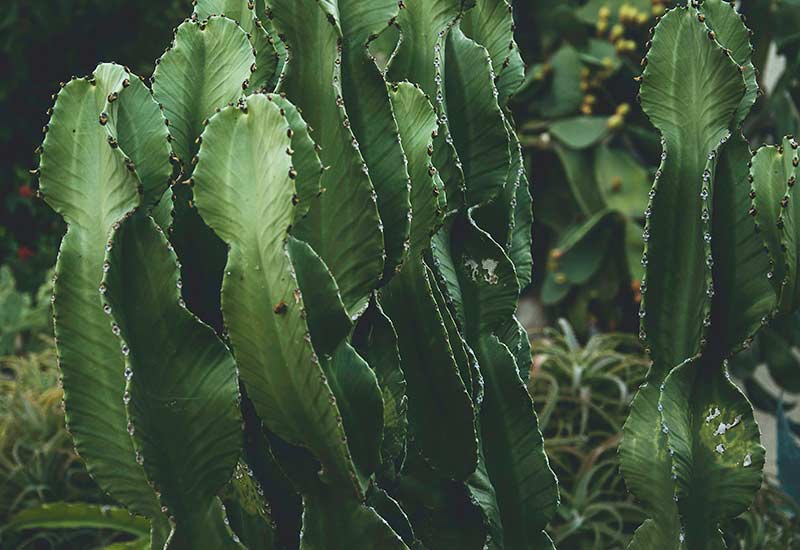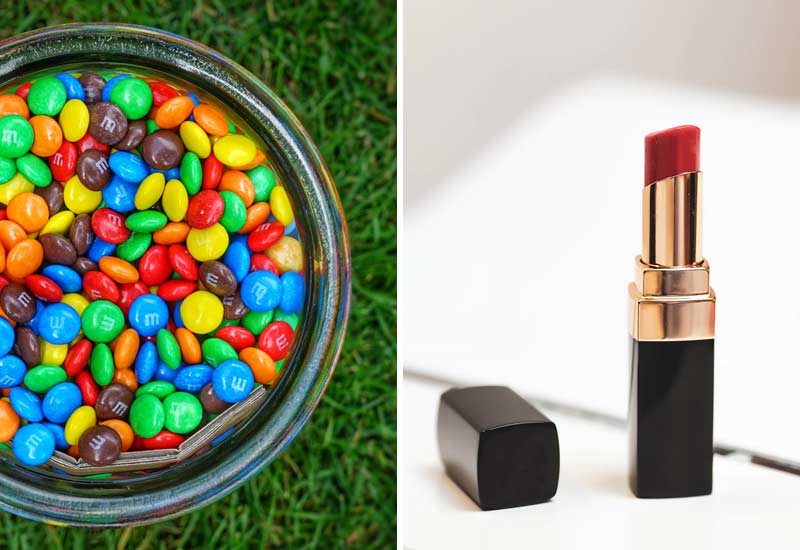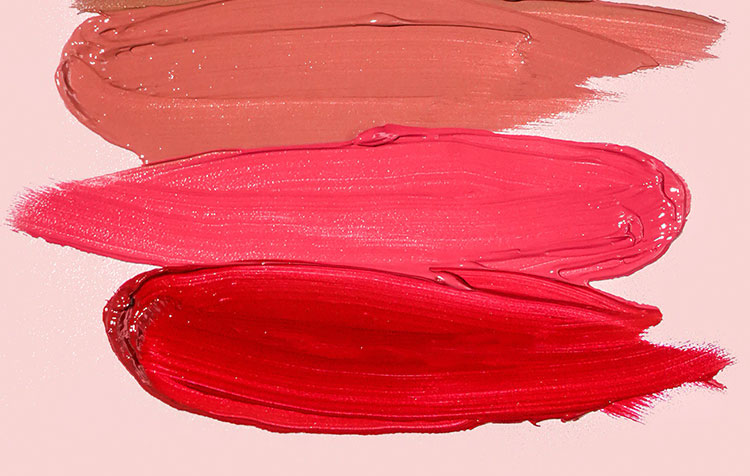Is carmine vegan, or not? Maybe you're standing in the grocery store eyeing the ingredient list of a jam or lipstick - or maybe you're just interested in plant and non-plant ingredients. Either way, you've come to the right place! The red dye carmine E 120 is found in countless everyday products.
In this article, I explain to you briefly and concisely why exactly carmine is not vegan, which products contain the dye and what alternatives you have as a vegan. Let's go!
What is carmine anyway?
Carmine is a light and heat resistant, mainly composed of carminic acid, strong red dyewhich is mainly used in the cosmetics and food industries. It is obtained from pregnant female cochineal scale insects, a species of insect that lives mainly on cacti in South and North America. The animals are collected for the production of the dye, boiled out and chemical additives are added.
Is carmine vegan? Yes or no?

To produce one kilogram of carmine, it is necessary to have between 60,000 and 100,000 scale insects killed There are even farms where animals are bred specifically for the production of the blood-red dye. Since animals are exploited and killed for this, products with the ingredient carminic acid are therefore not vegan.
If we make our own jam (sometimes contains carmine), I don't think we'd be looking at the disgusting idea to crush Central and South American insects for this purpose. But the industry does that.
Also the performance, killed lice in hair shampoo is kind of absurd, don't you think? Who would voluntarily pay money for that?
What does carmine contain?
With the knowledge you've just gained, I think you'll be looking very closely in the future. There are mostly red colored or bright red food and cosmetic productsin which real carmine is used. As a vegan, you must be careful in this regard, especially with products of the following categories:
- Confectionery
- Jam / jam
- Sugar sprinkles
- Cake (icing)
- Preserved cherries
- Lemonade
- Meat and sausage products
- Lipstick
- Eye shadow
- Nail polish
- Shampoo
- Crayons
- Wall paint
Do you know other product groups or products with carminic acid? Then feel free to drop me a comment with your note!
How can I get around the lousy dye?

Now I would like to show you how you can find consumer products with carminic acid among the ingredients. To do this, it is first advisable to know the common names. Common terms for the red, animal dye are mainly:
- Carmine
- Carminic acid
- Carmine E 120
- True carmine
- Cochineal
- Cochinille
- Cochineal red A
- Cochineal
- Carmine
Also the App CodeCheck will help you with a simple, short scan to expose manufacturers who use non-vegan carmine in their products. A vegan alternative is the synthetic carmine E 124 carmine. It is very rarely found in industrially manufactured products - instead, real carmine is used. However, E 124 is questionable from a health point of view due to the azo dyes it often contains.
Tip: At Non vegan E numbers I will introduce you to many more additives that are or could be of animal origin.
What other vegan alternatives are there?
From the Makeup Root or the Alkenna root for example, a red, purely vegetable dye can be extracted. In cooking, it can also be extracted with the help of red beet imitate. I just recently had a vegan steak that mimicked the rare meat with the help of the popular vegetable.
Apart from the alternatives for carmine mentioned above, it can of course also make sense to avoid the typical products with carmine altogether - because they are all not vital. On the contrary, for many people the addition of "true carmine" causes allergic reactions, such as skin rash and irritated respiratory tract.₂
Carmine is made from lice and is therefore not vegan
The bright red dye carmine unfortunately has a deadly history for Cochineal scale insects, which is why it is not suitable for vegans. Unfortunately, there are really countless products that contain carminic acid. As is so often the case, it therefore helps to check the respective To take a closer look at the ingredients list. Here you have learned what to look out for - and what alternatives are available to you for carminic acid.
Do you have any questions, tips or your own experiences with the ingredient carmine E 120 that you would like to share? Then I look forward to your comment!
Be always kind to animals,

PS.: You want to know, why i live vegan and also make no exception for insects? In the linked amount post you will find out!
References:
₁ Hans Strümpel: Homoptera - Handbuch der Zoologie. Volume 4, Partial Volume 28. De Gruyter, Berlin/New York 1983.
₂ health&media GmbH: Carmine red allergy (as of June 29, 2018), available at https://www.allergie.de/karminrotallergie. [06.01.2022].





